How to make your PVC cards with QR code ?
The QR code is making a comeback. Retail, leisure, events, business, health… so many sectors are rediscovering the QR code and printing it on PVC cards. Why? The combination of the QR code and the credit card format satisfies multiple needs thanks to its many advantages.
So what’s the benefit of using the QR code on a plastic card? How easy is it to generate a QR code on a PVC card? What are the potential applications and how can these cards be produced easily? All the answers are in this article.
Where has all this renewed interest in the QR code come from?
It’s back and has every intention of playing an important part in our daily lives: the QR code comeback! Very much on trend only a few years ago, it quickly lost its popularity and had been pretty much forgotten. It had not managed to reach its full potential. Today, however, the COVID-19 pandemic in particular has rekindled interest among many different sectors.
And this time, the benefits that it offers should pave the way for a more sustainable future well beyond the health emergency. Why? Because new habits will take shape. This period has revealed many unexpected applications, which will still be of interest after a return to normality. In addition, health-related apps have reawakened user curiosity about QR codes and have revealed other uses too. And the possibilities are immense.
So what makes the QR code special?
- Easy to use: ease of use is often essential for the success of any technology. A QR code can be quickly read and doesn’t require any special application: a camera on a smartphone is enough.
- Hygienic: the QR code is a piece of technology that doesn’t require any physical contact. All you need to use it is your personal smartphone. There are no other objects or items involved.
- Flexible: the QR code can also be used to send information or to trigger an action automatically. You can also use it to duplicate information digitally in order to share it more easily.
- Durable: the QR code is directed to a webpage, therefore making it easy to update the information on that webpage or the proposed action. It’s therefore less likely to quickly become obsolete, unlike printed media.
- Ecological: its ability to send information that can be instantly accessed and is always up-to-date gives it an added edge over printed media, which are often frozen in time. Some businesses, like Negotium, have even decided to replace their print media with a QR code.
- Economical: the QR code can provide some functionalities of electronic chips. Although there’s a cost involved for the chip component and the equipment to configure it, the QR code itself requires only printing. It therefore provides access to sophisticated technology at low cost.
- Fun: in order to work, the QR code has to be scanned. This action involves the user. The QR code therefore has a very important kinesthetic side, particularly in terms of user experience.
All of these advantages open the door to a range of applications.

PVC card with QR code: the winning combination.
Thanks to all of these qualities, the QR code is well on the way to attracting plenty of sectors. To go to the next stage and generate a QR code, you first need to choose the medium it will appear on. Today, one of the media that offers the most possibilities is the PVC card:
- A clever credit card format: the standard dimensions of the PVC card are extremely practical. It fits easily into a pocket or purse, so it’s always within reach.
- A quality image: its robust, smooth, and soft plastic material adds a mark of quality to the card. Subconsciously, people who have a PVC card are less likely to discard it.
- Great capabilities: the PVC card is very easy to print. It can be used for any creation and application.
PVC card with QR code: potential applications.
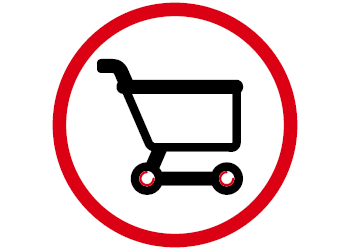
Retail
The plastic card with QR code in retail is a key component in the communications and marketing toolbox. It helps the brand image by adding a sense of modernity to the point of sale, and it improves the customer experience by providing additional information about products and services. It can also be used to provide details of offers and promotions. To extend the experience beyond the store visit, the QR code can also be used to encourage the customer to visit the online store.
Applications:
- Loyalty card
- Gift card
- Product label
- Promotion label
- Product certificate
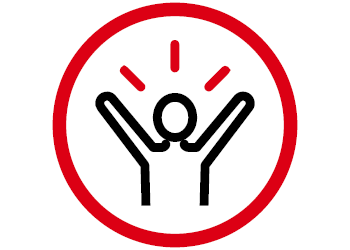
Leisure and events
Cultural venues, sports facilities, and restaurants can also benefit from the advantages of the QR code on plastic cards. This medium provides customers with essential information, such as restaurant menus. In an art gallery, the card with a QR code can provide further information about an object for a more interactive and informative visitor experience. In the sports and events sector, it can be used for automated access control to trade fairs, festivals, stadiums, sports facilities, ski resorts, and plenty of other venues.
Applications:
- Menus
- Wall label
- Sports season pass
- Ski lift pass
- Movie pass
- Festival pass
- Trade visitor badge
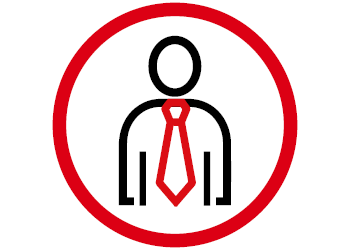
Business
The QR code badge in businesses is mainly used for access control. It allows both staff and visitors to access company buildings according to established policies. It is not uncommon for the employee badge to be used for other purposes too, such as access to printers, coffee and snack machines, etc. To take it a step further, the QR code can also be used to automate certain actions, like booking rooms.
Another potential application is that of identifying equipment that is earmarked to leave company premises. The QR code badge is then attached to a computer bag, for example. So if the equipment in question is lost, the QR code allows the person who finds it to easily get in touch with the owner via the website or a contact form.
The construction sector also uses the QR code on its ID to ensure secure access to construction sites.
Applications:
- Multipurpose employee badge
- Visitor badge
- Display for automated actions
- Construction sector ID
Application focus: business card with QR code
Enhance your business card.
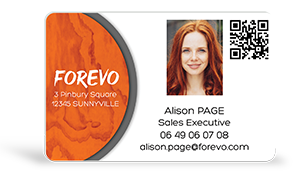
Generating a QR code for your business card is a smart move: you can get a maximum amount of information on a minimum amount of space. The QR code can then be directed to all types of URL (social networks, resumes, websites, etc.) and even automatically trigger actions (adding a contact to the address book, sending a message, calling, emailing, etc.).
A more modern image for your business card.
The QR code is in fact associated with the digital world. It therefore gives your PVC card a more modern image. In addition, the QR code is now available in different designs, shapes and colors. This gives it an esthetic appeal that enhances your card even more.
Application focus: the QR code in healthcare
Patient card.
The PVC card with QR code was already used in the healthcare sector before the pandemic. Its main use was the patient card. The purpose of the patient card is patient follow-up: appointment reminders, access to medical records, information on treatment and dosage, access to test results, etc.
Test certificate and vaccine passport.
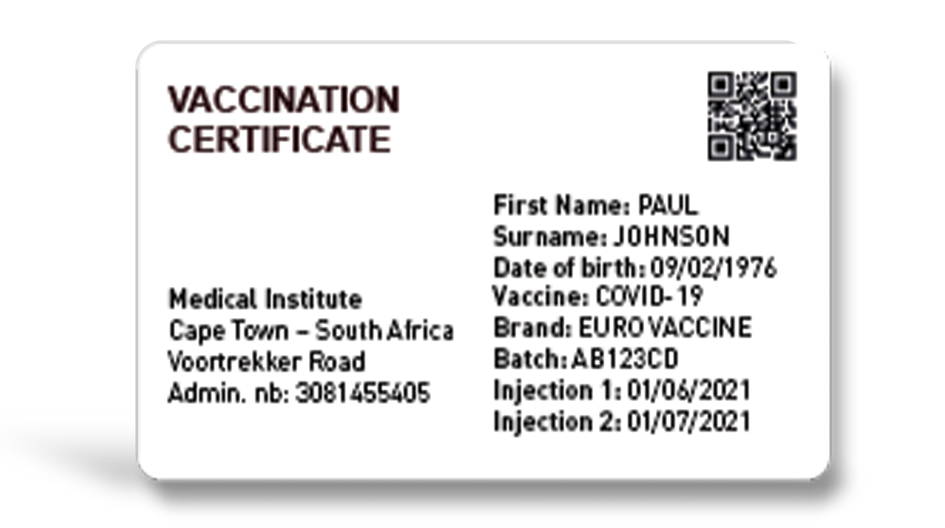
In the current context of COVID, the PVC card with QR code is now also used as a test certificate or vaccine passport. A number of countries have started to roll out these cards to their populations. They are issued instantly, using printing solutions installed directly at the test or vaccination centers.
How can I generate QR codes on plastic cards?
You now know that the PVC card with QR code has plenty of advantages and its potential applications are numerous. And the icing on the cake is that it’s as powerful as it is easy to create! All you need is:
- A plastic card printer like these,
- QR code and card design generator software, such as cardPresso,
- Easy-to-use consumables: PVC cards and ribbons.
This is what we offer at Evolis.